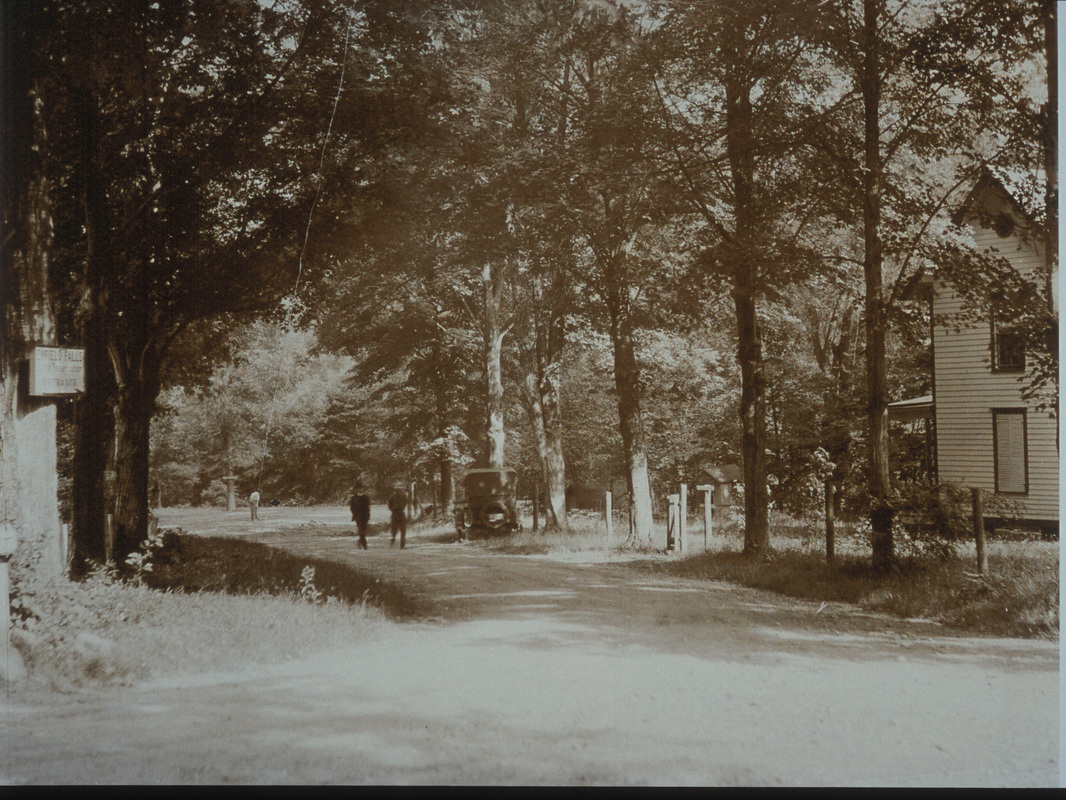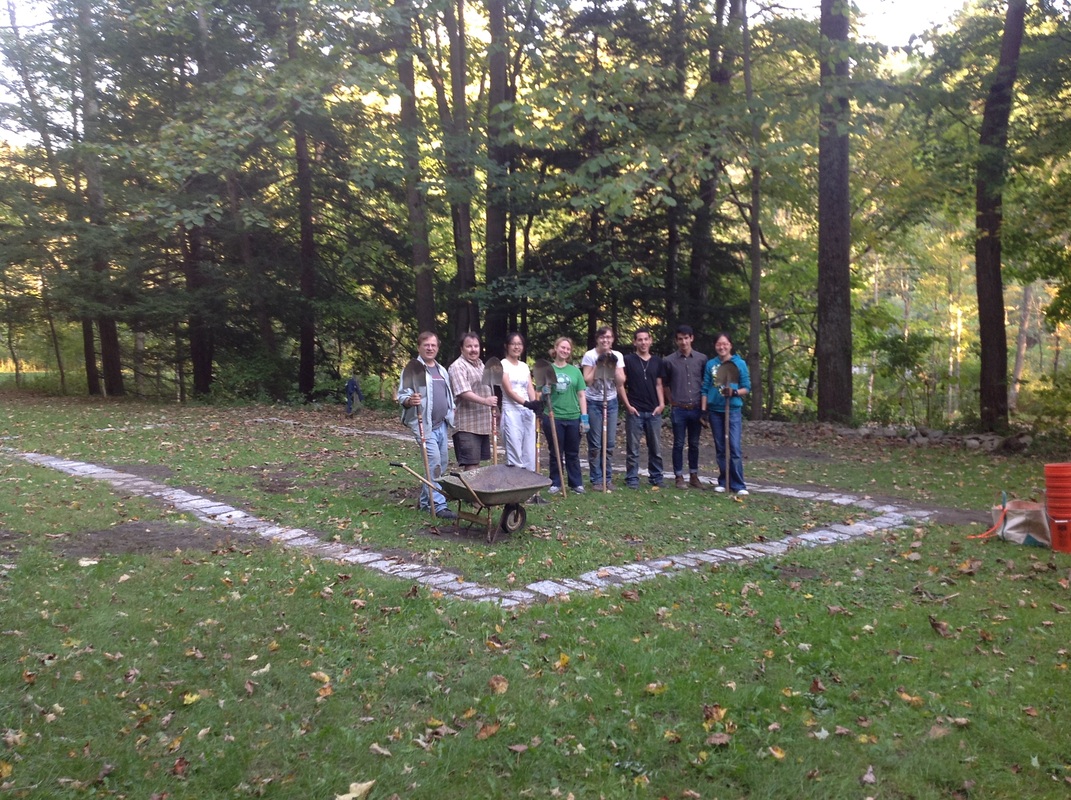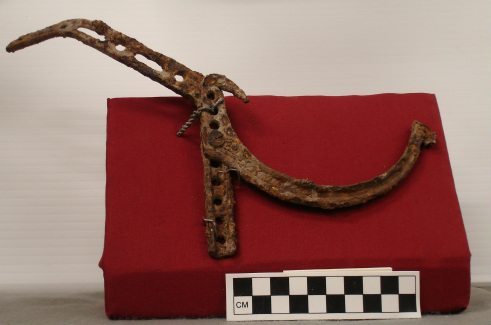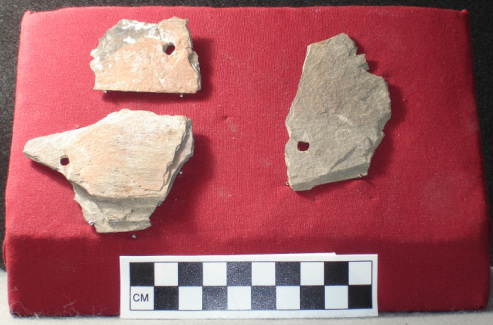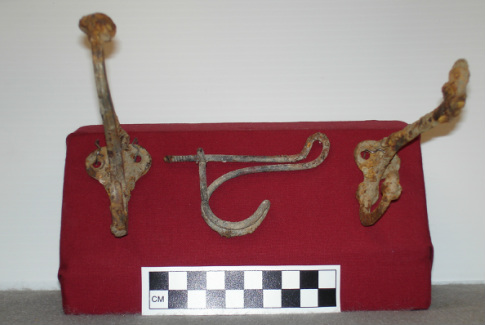The Tryon House - Summer Home of an Entrepreneur
The allure of the gorges and waterfalls of Enfield Falls drew more than just vacationers to the hotel. Philadelphia businessman Edward Tryon was also drawn to the scenic beauty. Edward Tryon was the owner of the Edward K. Tryon Company. Among the subsidiaries was a gun factory, a wholesale business, and a retail store in Philadelphia. The wholesale business included selling both domestic and imported fire arms to the United States government. The retail store in turn sold imported and nationally-made guns to the public, including arms manufactured by Ithaca Gun. Perhaps during one of Edward Tryon’s visits to the Ithaca Gun factory he decided to go sightseeing at the nearby gorges before returning to Philadelphia and was captivated by their beauty.
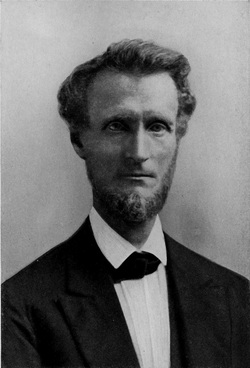
In 1863, after being in ill health for a number of years Tryon decided to retire early and turn over the ownership of business to his two sons, George and Edward Jr. Retiring to his country home in Pittville, Pennsylvania, he pursued his avocation in horticulture. In 1878, Edward Tryon purchased a small lot (less than an acre) for his summer home and then he bought the hotel and gorge property from Henrietta Wickham.
Edward Tryon died in 1892 and willed all of his Enfield Falls property to his daughter Adeline Tryon. Adeline Tryon held onto the property until her death in 1904 when the property was willed to her nephew and his wife. Members of the Tryon family continued to vacation at their summer home in Enfield Falls until 1915. In 1916, the Tryons sold all of their Enfield Falls property to Robert Treman’s land agent. Starting 1918 Robert Treman began renting out the former Tryon house until donating all of his Enfield Falls property to New York State in 1920. The Tryon House was used as a home for the Rumsey family until 1927 when, according to newspaper accounts, it was destroyed in a fire on December 26. The newspaper noted that because the house was covered by a slate roof the chimney fire was focused downward and inward, rapidly destroying the home.
Edward Tryon died in 1892 and willed all of his Enfield Falls property to his daughter Adeline Tryon. Adeline Tryon held onto the property until her death in 1904 when the property was willed to her nephew and his wife. Members of the Tryon family continued to vacation at their summer home in Enfield Falls until 1915. In 1916, the Tryons sold all of their Enfield Falls property to Robert Treman’s land agent. Starting 1918 Robert Treman began renting out the former Tryon house until donating all of his Enfield Falls property to New York State in 1920. The Tryon House was used as a home for the Rumsey family until 1927 when, according to newspaper accounts, it was destroyed in a fire on December 26. The newspaper noted that because the house was covered by a slate roof the chimney fire was focused downward and inward, rapidly destroying the home.
Excavating a Prosperous Home at Enfield Falls
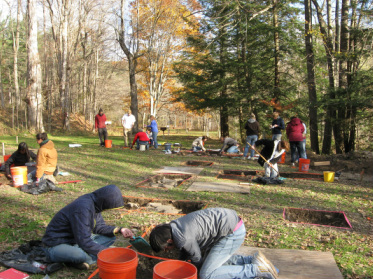
Excavations in 1998 revealed evidence of a fire. Interviews with Donald Rumsey who had lived in the house as a young child during the 1920s confirmed that a fire had burned down the house, adding that many of his family’s possessions were destroyed in the fire. In 2003 and 2011, excavations by Cornell archaeologists found further evidence of the fire. Expanding on what was known from the documentary record excavations indicated that the most intense fire was in the central southern part of the house. There was no evidence of fire in any of the yard areas and there was minimal architectural debris in the yard areas, thus suggesting that the house collapsed inward.
In the excavation units within the house archaeologists found melted glass and melted metal, and some melted conglomerates composed of two or three different materials. Glass melts at 1000 degrees Fahrenheit, it turns to a liquid at 1300 degrees Fahrenheit, and wrought iron melts at 2750 degrees Fahrenheit. Some of the melted conglomerates looked as if liquid glass flowed over distorted and melted metal. Kaolin, the main ingredient in porcelain, has a melting point of 3275 degrees Fahrenheit. Because of the high melting temperature of porcelain the archaeologists only found fire-scarred porcelain doorknobs.
In the excavation units within the house archaeologists found melted glass and melted metal, and some melted conglomerates composed of two or three different materials. Glass melts at 1000 degrees Fahrenheit, it turns to a liquid at 1300 degrees Fahrenheit, and wrought iron melts at 2750 degrees Fahrenheit. Some of the melted conglomerates looked as if liquid glass flowed over distorted and melted metal. Kaolin, the main ingredient in porcelain, has a melting point of 3275 degrees Fahrenheit. Because of the high melting temperature of porcelain the archaeologists only found fire-scarred porcelain doorknobs.
|
The only picture we have of the Tryon House is a partial picture of the house (seen at the top of this page). To answer the questions of what its shape and dimensions were the archaeologists would have to dig. Based on 19th century newspaper descriptions of the house as “a cottage” archaeologists expected to uncover a modest-sized building. Instead they found the foundation of a substantial, well-built house – this was no simple summer cottage. In fact, the summer home was larger and more ornate that some of the year-round homes in the hamlet. The year-round homes in the hamlet were often no larger than thirty feet by thirty feet but the Tryon “summer cottage” was forty-six feet long and twenty feet wide. Most of the buildings in the hamlet were built on a shallow foundation without a basement and had only a small crawl space under the floor. The Tryon House had a cellar with a fieldstone wall. Cornell archaeologists plan to return to the site in the fall of 2016 to examine the foundation further.
|
|
Some 19th century homes had an overhanging roof to disperse water away from the foundation. However, a gutter system, while more expensive, was more effective in diverting water away from a house’s foundation. Based on archaeological evidence the Tryon summer home had gutters around the roof. While many of the year-round houses in the hamlet had wooden shingled roofs, archaeological excavations found numerous, and expensive, slate shingles at the Tryon house. Based on what was found Edward Tryon spared no expense with his “summer cottage” and opted to buy grey and red slate shingles to create a pattern on the roof. |
|
Based on the archaeological evidence and the location of the artifacts within the house, some assumptions can be made about the interior of the house. As you entered the house there were hooks to hang coats. The house had electricity and archaeologists found the remains of electrical light bulbs. The house had indoor plumbing as evident by the remains of a claw footed bathtub and marble bathroom sink fixtures. |
